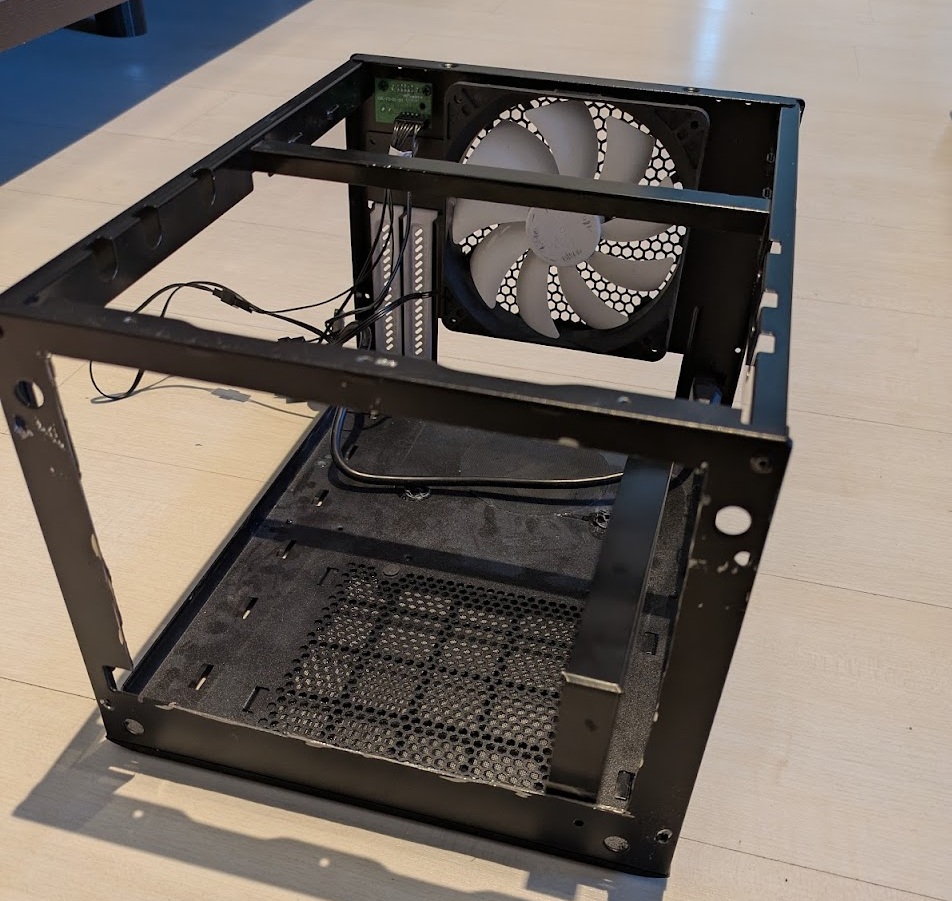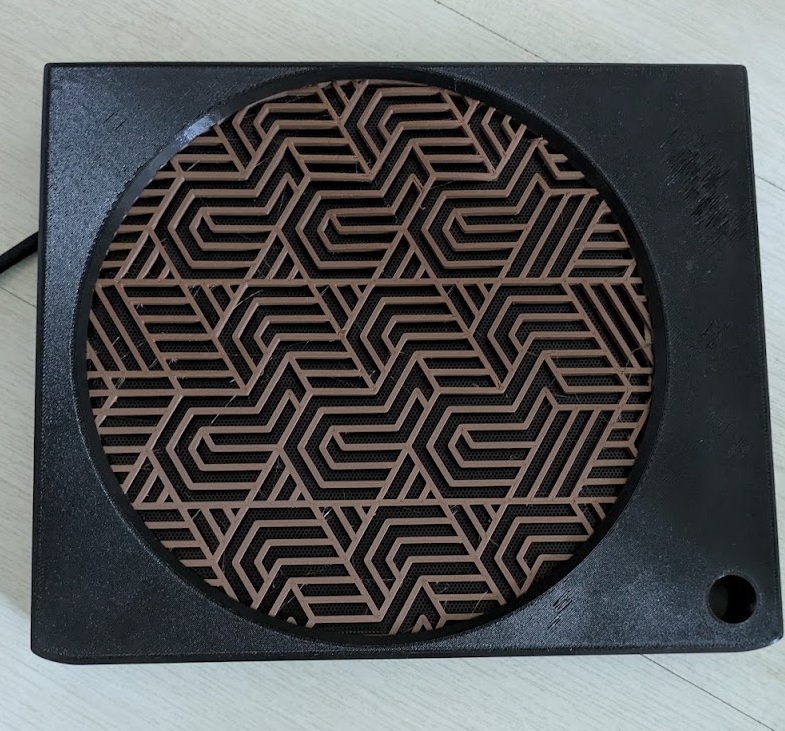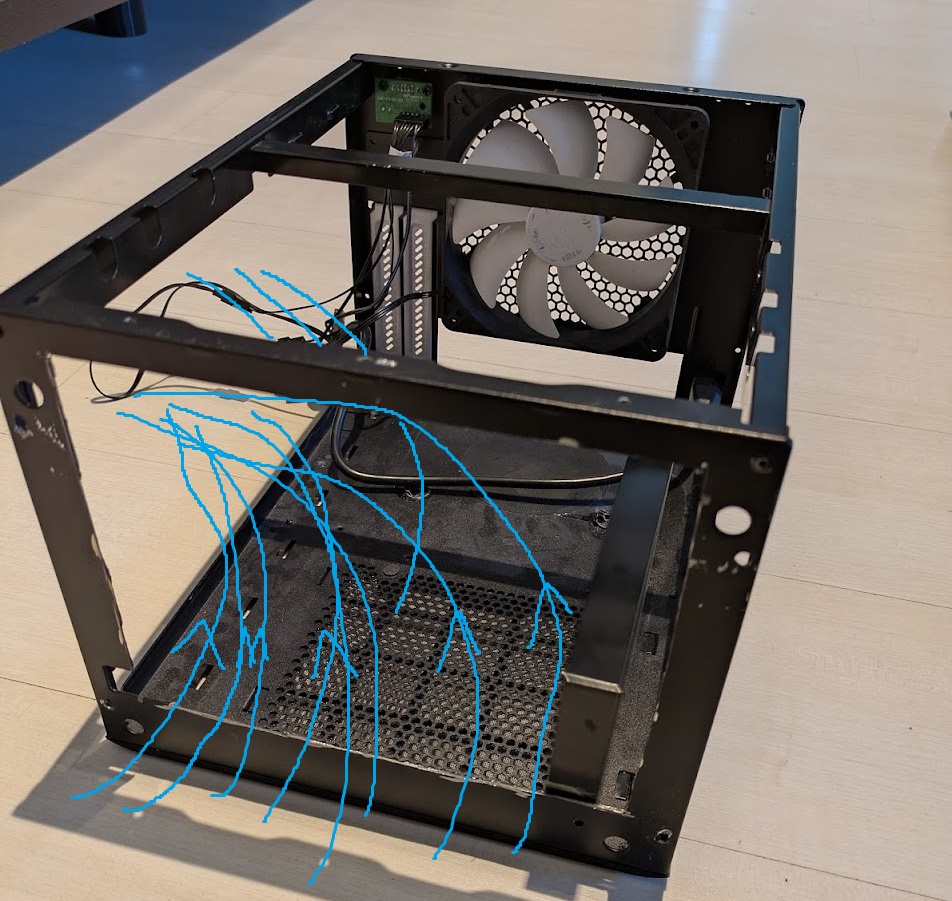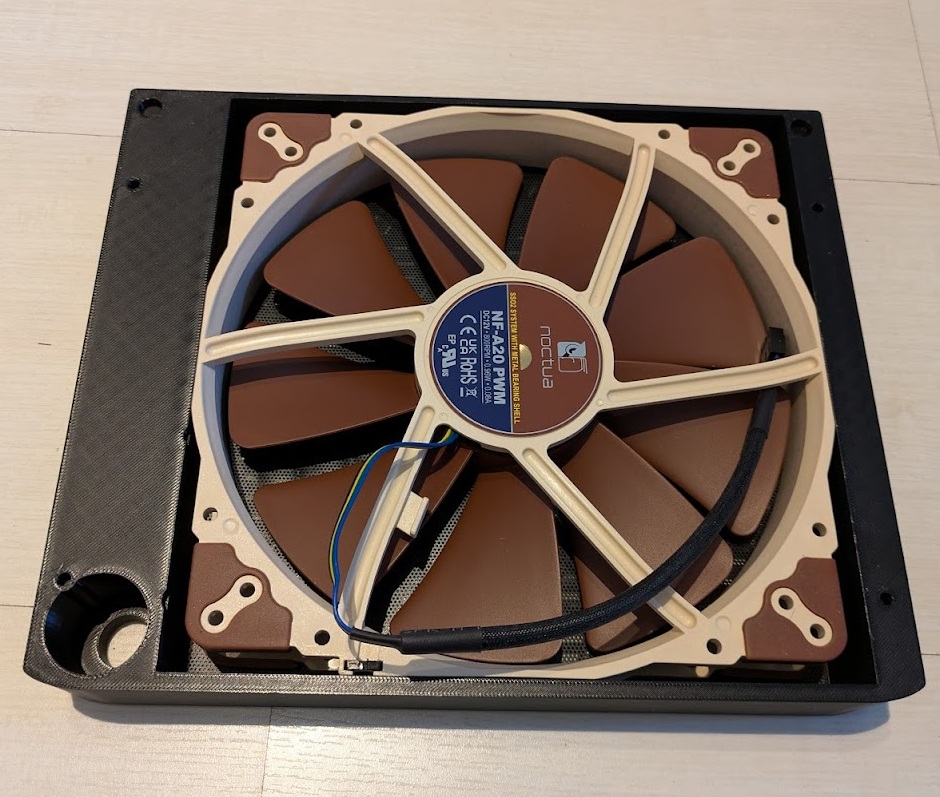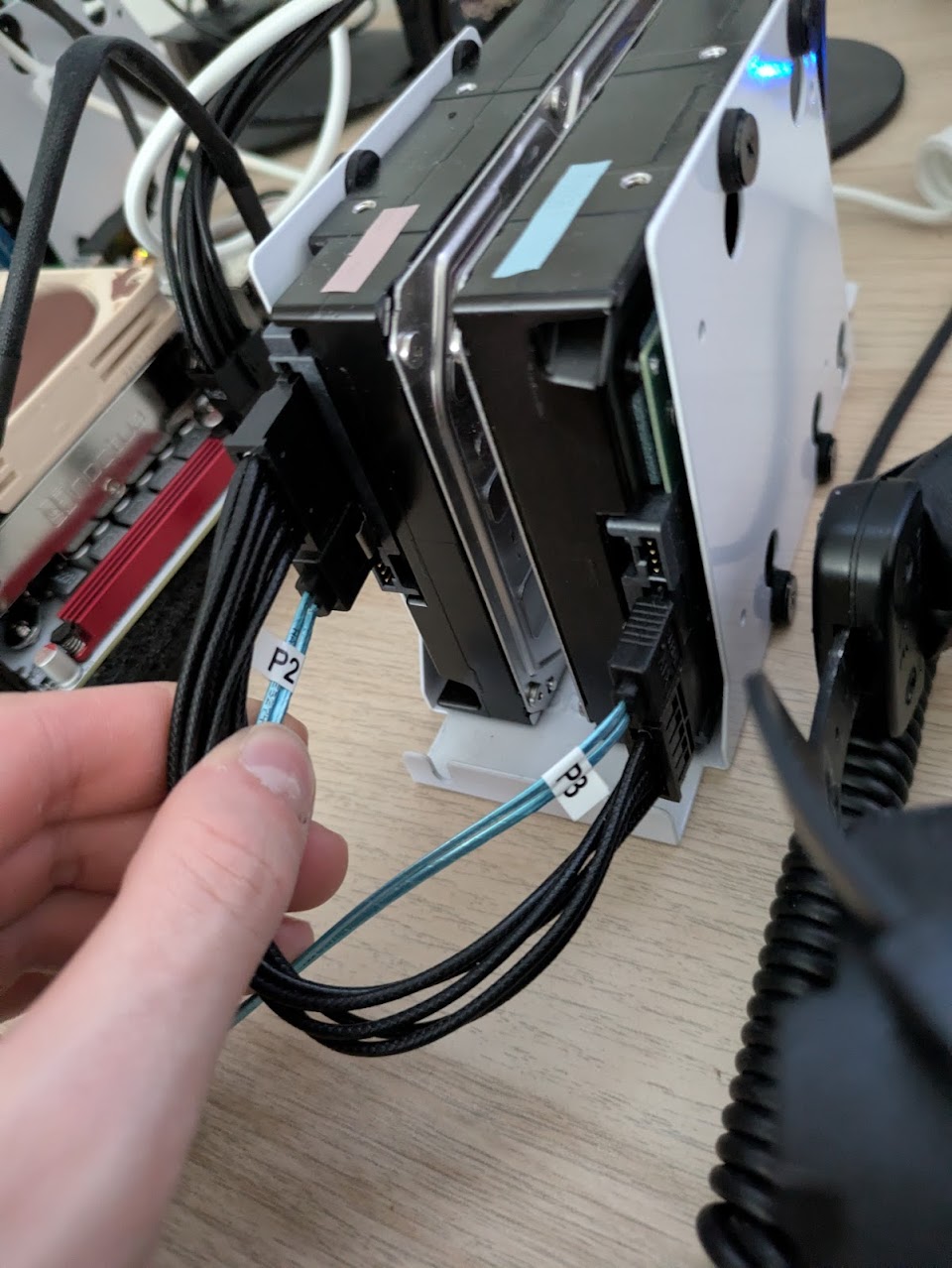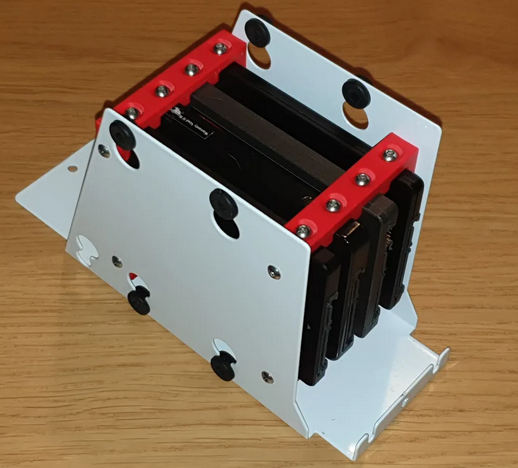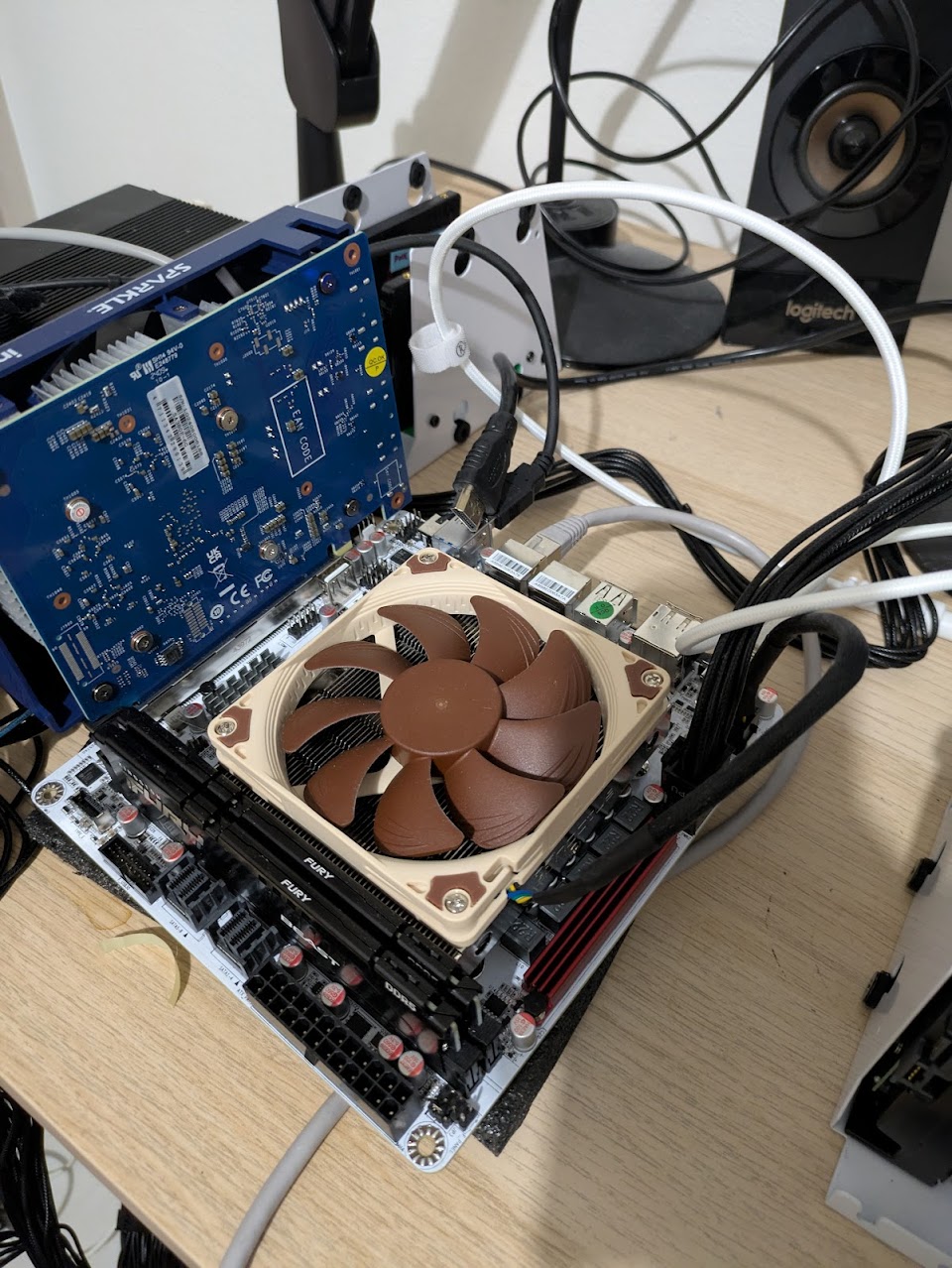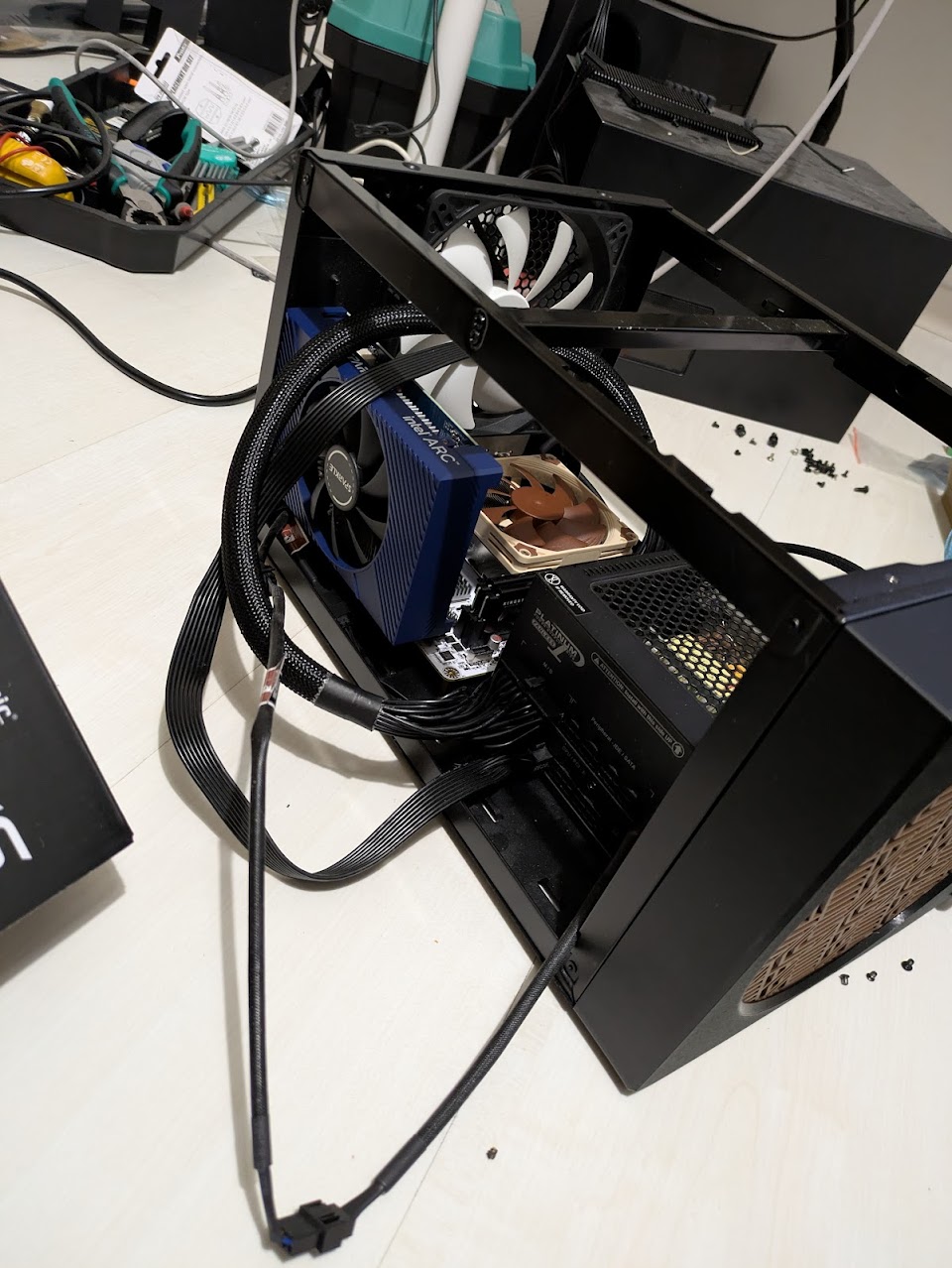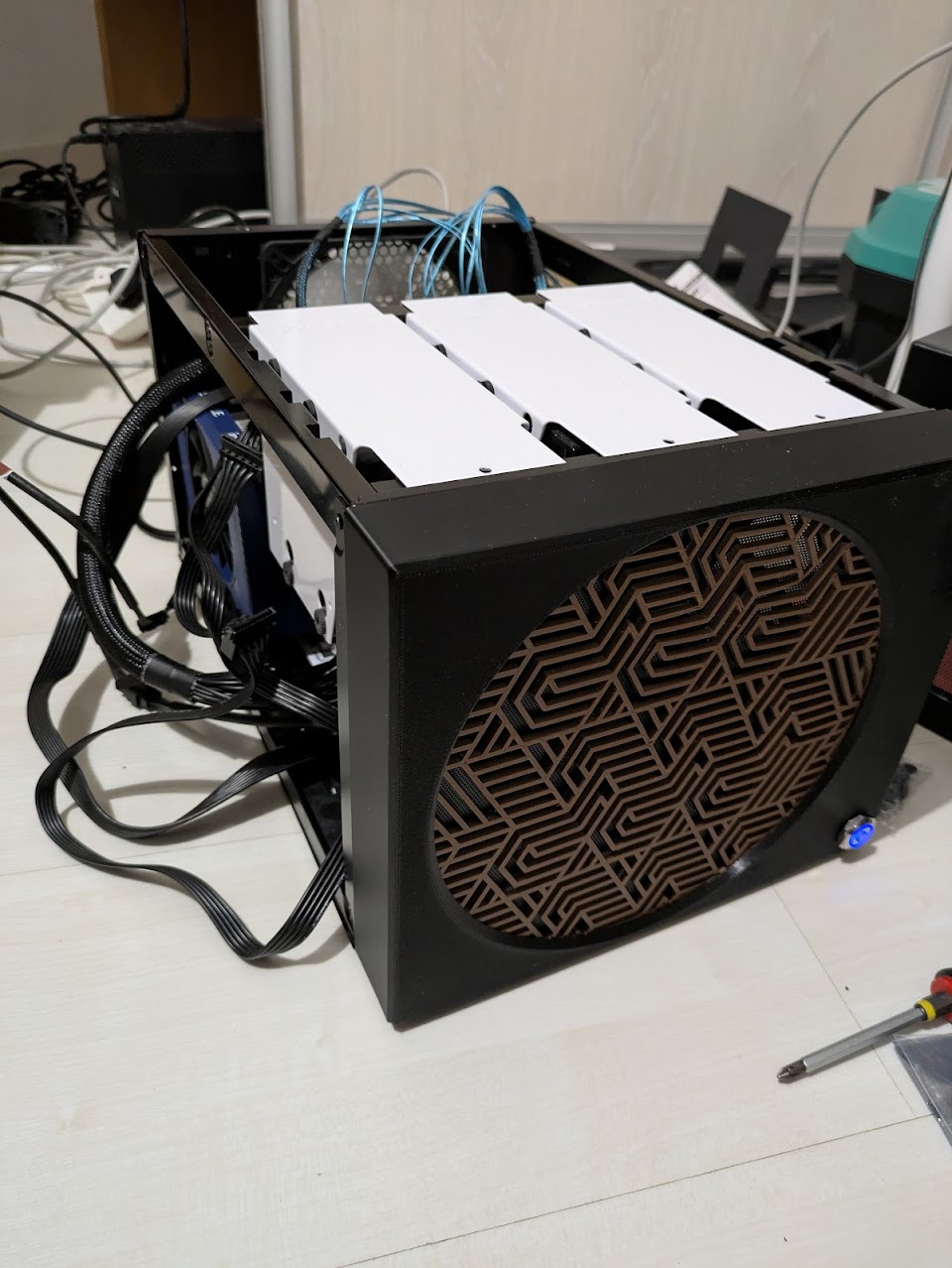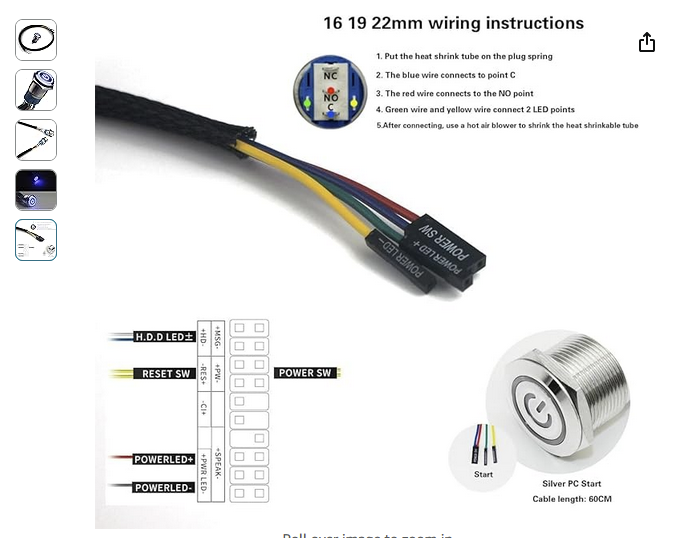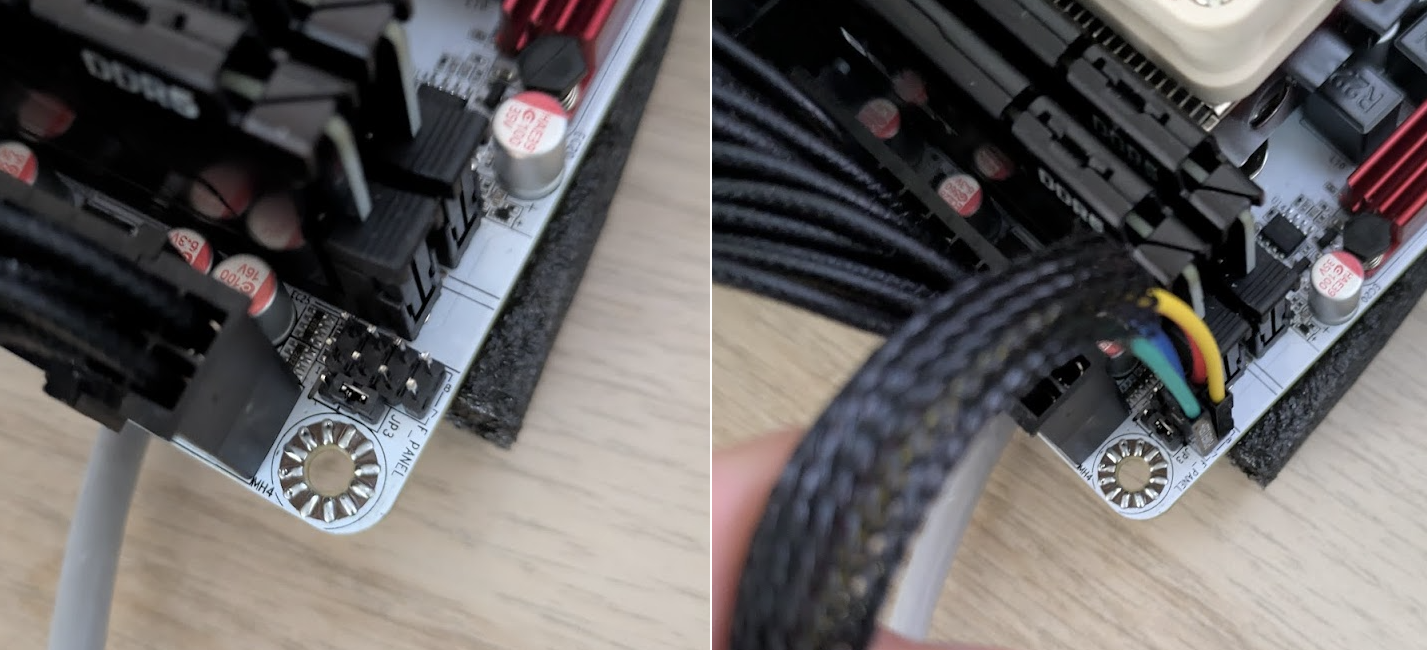Setting up Hardware && BIOS [Homelab 2.0]
Introduction
After we’ve successfully chosen what components we want to use and what software to run, we can start building it.
In this post I’ll show you how to
Hardware
- mode Fractal node 304 front panel to fit 200mm noctua fan
- put all components together
- connect new power button to the motherboard
How to
Mode Fractal node 304 front panel
The original Fractal node 304 comes, with the fully covered front panel. I’ve found this to be extremely bad for the airflow in the case, so I decided it has to go.
Fortunately, there is a relatively easy solution (which also looks amazing!) and we can put big 200mm noctua fan in.
I’m talking about this Node 304 front panel mod by pixelwave, which also made its appearance in Wolfgang NAS building video
- cut the hole
- print the parts
I went with the black/brown color combination in the classic Noctua color scheme.
If you look closely, I’ve put one more PVC mash filter behind brown 3d printed one, to keep the dust out.
You can find some amazing color combination ideas in the comments as well!
- put the Noctua fan in
Be mindful of the orientations. Follow the arrows on the fan. So the air is getting pulled from the front panel and pushed to the case to left where the exhaust is
- put the power button in the case
You can buy the same button I’ve used from amazon
Simply push the power button in the the front panel hole and connect the cables, as you can see in the picture.
Put all components together
Put the disks inside the “white sockets”
For SSD I’ve used this SSD caddy 3d printed mod from @DrJekyll_242009
Insert CPU, cooler, RAM, GPU to the motherboard.
Put PSU in the the case and attach all the power cables to motherboard and disks.
The motherboard requires both 24pins+8pins ATX 12V 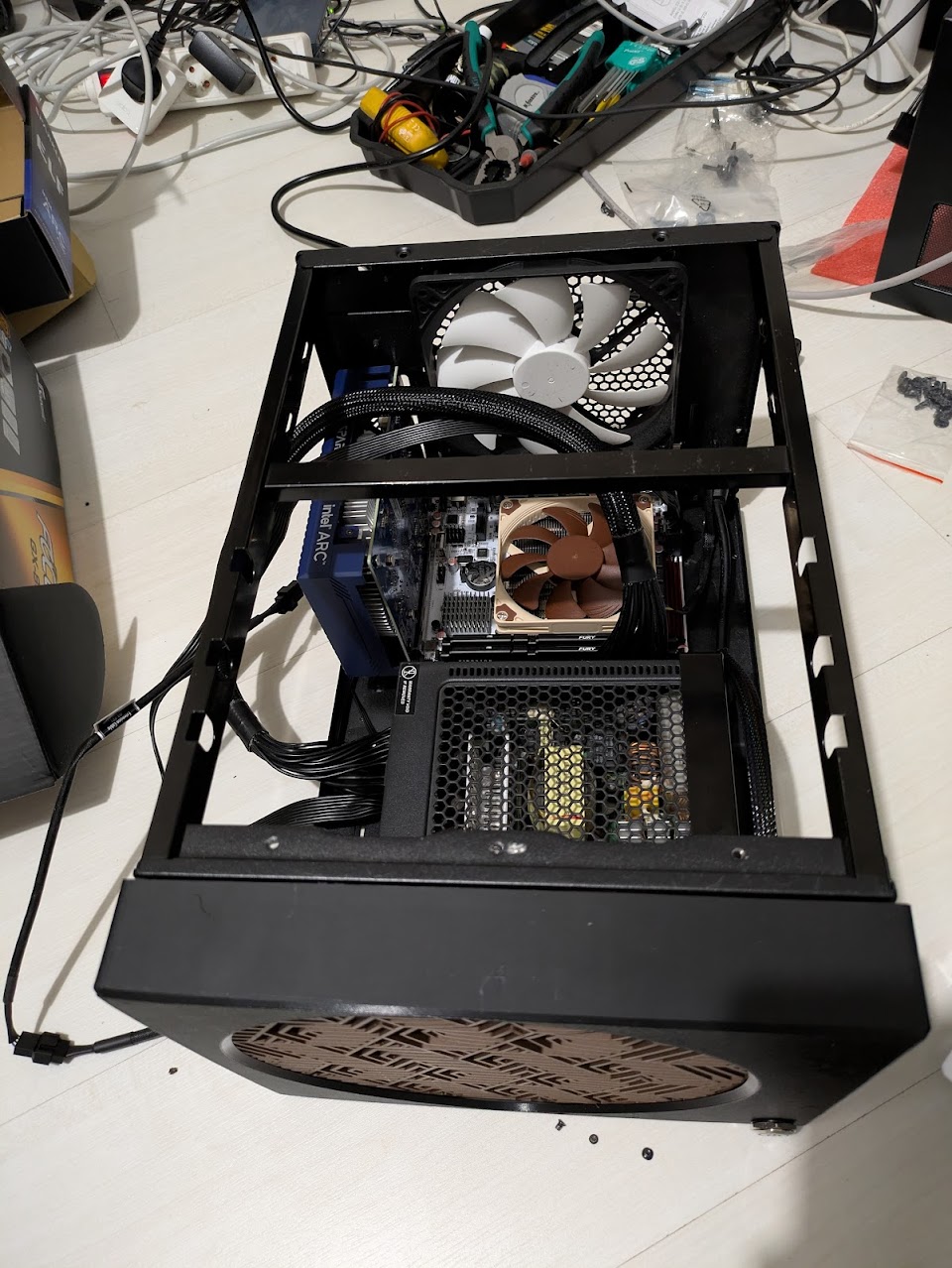
Connect power button to motherboard
Basic BIOS configuration
PDF manual to the older version of the same motherboard.
For better power efficiency we can enable C states.
In order to save energy when the CPU is idle, the CPU can be commanded to enter a low-power mode. Each CPU has several power modes and they are collectively called “C-states” or “C-modes.”. The lower the state the deeper the sleep is and the less power the CPU takes.
Advanced > Power & Performance > CPU > C states = Enabled Advanced > Power & Performance > CPU > Package C state Limit = C10 Auto start on boot = Enabled
I didn’t find any other BIOS settings to make notable difference.
To enable features like ASPM, you need to used edited BIOS (or edit BIOS yourself) -> follow bellow
Flash bios on Cwwk q670 plus [optional]
Cwwk has disabled multiple settings in the BIOS (like ASPM, SATA DevSlp …) because of problems related to that setting features (instead of fixing it..)
Fortunately, the community got together once again and created new edited BIOS version with re-enabled features.
This may potentially brick or make device buggy, so do this on your own risk.
Download default (non-edit version) [11/18 firmware] from cwwk website
Flash the default version to the USB (with something like rufus)
Download edited BIOS version created by Yonji1 from google drive
replace the files on the flashed USB
boot the system with USB inserted to flash
Now you should be able to use ASPM. Just be careful, because users has reported errors like
1
errors like 'pcieport 0000:00:1d.0: AER: Corrected error received' #on the nvme slot
1
2
3
4
5
- It looks like ASPM substates are not really working, L1 seems to be fine but L1.1 and L1.2 probably doesn't work (are grayed out in BIOS). I even forced it with nvram default settings to L1.1 & L1.2 but no difference really.
- NVME in front slot looks to be working with L1.
- PCIE root #3 (and #2 too probably) are the ones for network card. If you enable ASPM there most likely you won't be able to get your network interface up.
1
Looks like Intel I226-V is limiting ASPM. Trying to activate ASPM causes a system freeze. Not sure what is the cause of this
If anything happens, just fall back and flash to default BIOS version
Edit BIOS yourself
With this free opensourced UEFI-edit tool you can even edit BIOS yourself. Here is a little guide that can help you get started.
Conclusion
With the hardware mods now in place, we can start installing our choise of hypervisor (proxmox).
Check out other posts in the series
- Hardware/software choices/alternatives [Homelab 2.0] Setting up Hardware && BIOS [Homelab 2.0] Install && Configure Proxmox [Homelab 2.0] UPS proxmox setup (+ disable UPS beeping) [Homelab 2.0] Combine NPM reverse proxy && Pi-hole DNS for Secure, seamless app local access [Homelab 2.0] Cloudflare | Pangolin - Access your homelab from the Internet over CGNAT with help of the tunnels [Homelab 2.0] Replace Google Photos with Immich and Pangolin/CF tunnels [Homelab 2.0] Qbittorrent LXC with ProtonVPN and port forwarding enabled
